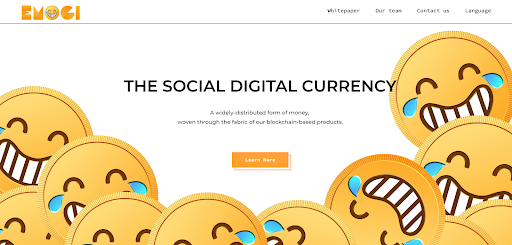Latest news about Bitcoin and all cryptocurrencies. Your daily crypto news habit.

Its website may be plastered with images of crying face emojis and its token ticker may show up as a “LOL”, but don’t let this fool you: EMOGI Network is serious business. The self-described “social digital currency” promises to deliver on all attributes that are meant to be synonymous with cryptocurrencies, which stand for low-cost transactions that can be sent quickly and directly, in a peer to peer fashion.
Microtransactions, including tipping on social networks, are amongst use cases envisaged for EMOGI Network’s LOL token, which operates on its own native blockchain. LOL token’s architects planned it that way. Without going with the flow and launching on Ethereum, EMOGI is able to keep transactional costs down without compromising on decentralization. A proof-of-stake algorithm, coupled with a staking model supported by 6 million users across EMOGI’s Berminal and Bermi apps, ensures that the network is sufficiently distributed. This setup also gives token-holders an incentive to earn through staking tokens within the mobile app.
View this post on InstagramWhat do you think the next project will be for Huobi Prime 5?
A post shared by Huobi Global (@huobiglobalofficial) on Aug 7, 2019 at 7:47am PDT
EMOGI Targets the Mobile Market
Strong fundamentals alone don’t send a token’s value upward. There needs to be enough liquidity coupled with genuine user-side demand. EMOGI appears to have already taken care of the latter, while the former – liquidity – just got a major leg-up thanks to listing of the token on Huobi Prime on August 15. It has now become the fifth project to launch as an IEO on the Asian exchange, a fitting platform for a continent whose love of mobile technology is matched by its love of emojis.
A Serious Team With a Sense of Humor
Any project that styles its branding around emojis must have an associated sense of humor, but EMOGI’s fun-loving exterior belies a business-minded interior. The team includes two co-founders of IOST, the high-speed blockchain network that’s built around scalability and decentralization. The pair, Rui Xiao and Jiaming Zhong, have applied that know-how to EMOGI Network, which can be thought of as the P2P – or B2C – version of IOST.
That’s not to say that EMOGI is merely a more brightly painted version of its serious older sibling, however – far from it. Despite its core team hailing from China, EMOGI Network has seen 70% of its existing user base accrued in Latin America, where social media adoption is high, and viral products spread rapidly through word of mouth. The fact that users can earn LOL tokens for creating content and engaging with the community using the EMOGI apps has also helped bolster its adoption.
Two Apps, 300 Cryptocurrencies, Millions of Shares
Berminal, its name a portmanteau of blockchain + terminal, is a crypto news platform that provides real-time information on over 300 cryptos. 11 languages are supported, while technical indicators help traders gauge their next play. Bermi, meanwhile, is EMOGI’s video-sharing app. The nascent decentralized social app has seen fierce adoption, with millions of Latin American users sharing content every month. In addition to earning tokens for creating compelling video content, Bermi enables users to earn LOLs for referring friends, completing challenges, and checking in daily.
For crypto networks to see real-world adoption, fancy tech alone won’t be enough: there needs to be a compelling value proposition for users to switch from the apps and social networks to which they’re accustomed. Through combining speed and scalability with fun and functionality, EMOGI Network might just have cracked the formula. Come for the emojis, stay for the censorship-resistance.
Disclaimer
The views and opinions expressed in this article are solely those of the authors and do not reflect the views of Bitcoin Insider. Every investment and trading move involves risk - this is especially true for cryptocurrencies given their volatility. We strongly advise our readers to conduct their own research when making a decision.